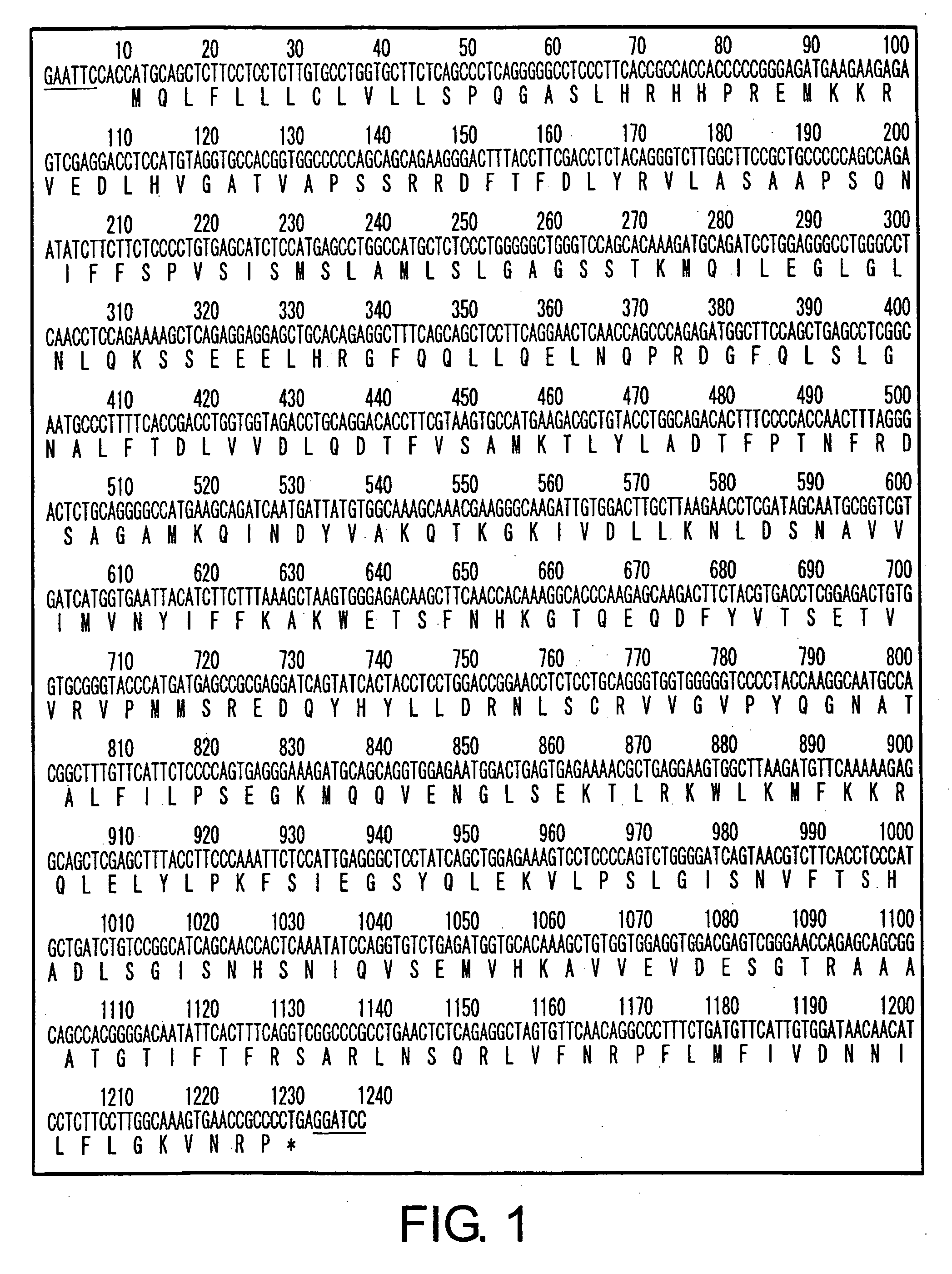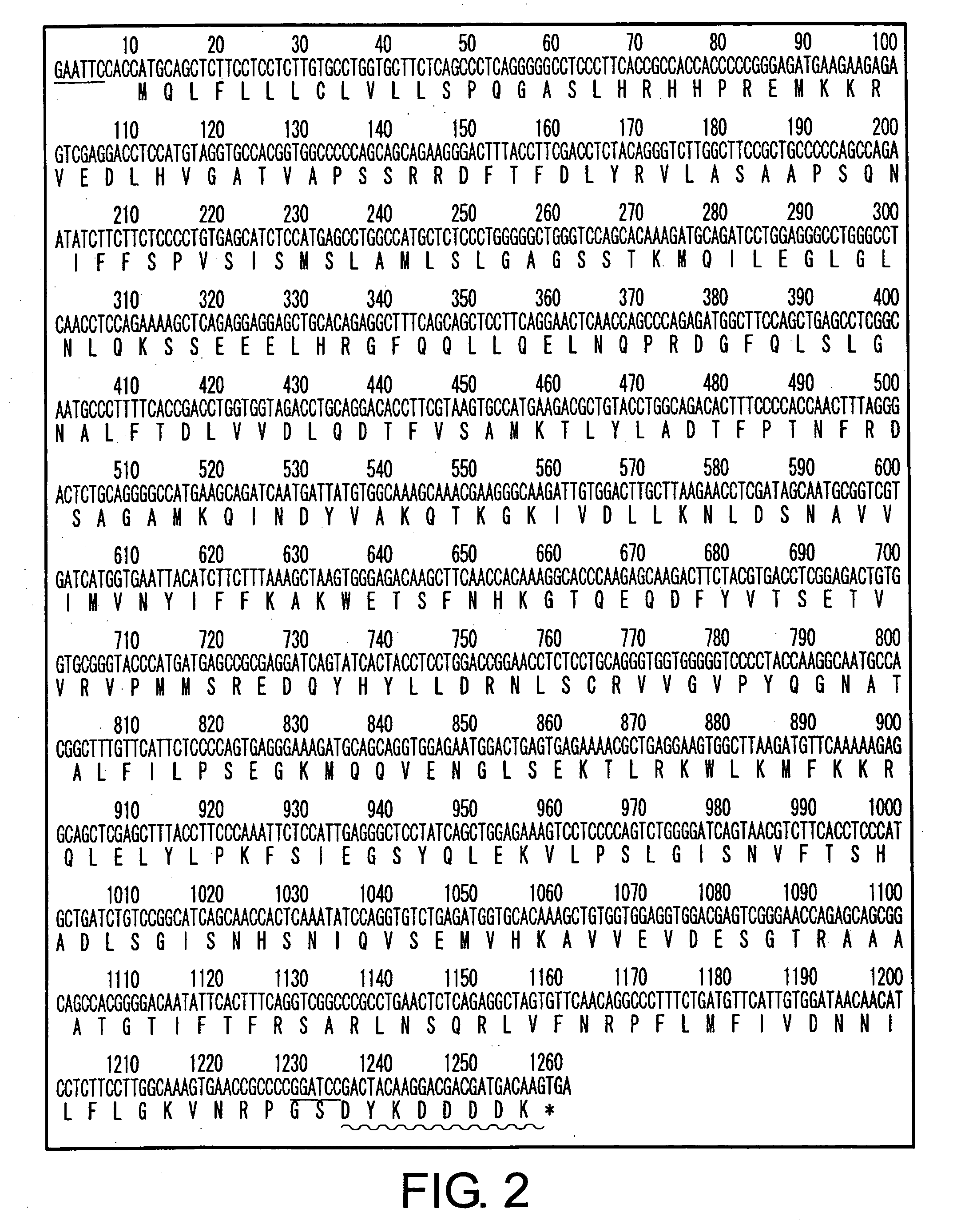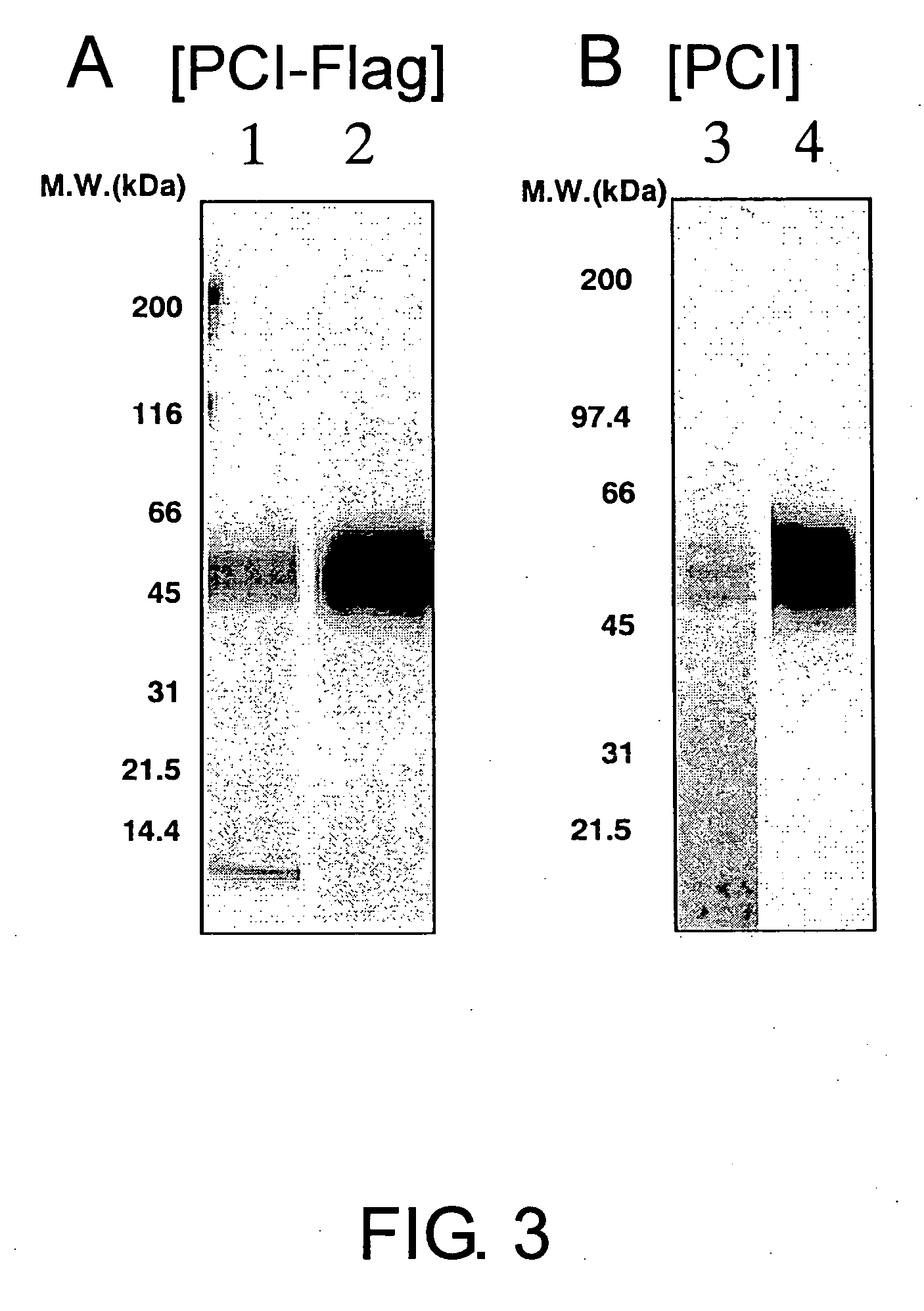Anti-pci neutralizing antibody
a neutralizing antibody and anti-pci technology, applied in the field of neutralizing antibodies against protein c inhibitors, can solve the problems of bleeding tendency between drugs, low molecular weight heparin requires daily subcutaneous administration, and the interaction between low-molecular weight heparin and other drugs is a problem, so as to enhance the production and/or activity of apc, inhibit pci activity, and enhance the effect of pci activity
- Summary
- Abstract
- Description
- Claims
- Application Information
AI Technical Summary
Benefits of technology
Problems solved by technology
Method used
Image
Examples
example 1
Construction of PCI Expression Vectors
[0105] A full-length PCI gene was cloned by PCR using the primers indicated below.
(SEQ ID NO: 1)PCI-up: 5′- ACG AAT TCC ACC ATG CAG CTC TTC CTC(SEQ ID NO: 2)PCI-low: 5′- CTG GAT CCT CAG GGG CGG TTC ACT TTG C
[0106] The human PCI gene which comprises the entire ORF containing an EcoRI sequence at the 5′ end and a BamHI sequence at the 3′ end was amplified by PCR, using the primers described above and Human kidney marathon ready cDNA (Clontech) as a template. The amplified DNA fragment was digested with EcoRI and BamHI, and inserted between the cleaved EcoRI and BamHI sites in the animal cell expression vector pCHOI. The nucleotide sequence of the PCI gene in vector was determined to select a plasmid containing the desired sequence, thereby completing the construction of the pCHOI-PCI vector (FIG. 1).
[0107] A Flag-tagged PCI expression vector (PCI-Flag) was constructed as described below. The PCI gene was amplified by P...
example 2
Purification of PCI-Flag
[0110] The PCI-Flag-overexpressing CHO cell lines were cultured in roller bottles (1700 cm2) using α(−)MEM (nucleic acid-free) containing 5% FBS. The cells were cultured until confluent (37° C., 0.5 rpm), and then the media were removed. The cells were washed with PBS, and cultured in CHO-S-SFMII medium (GIBCO BRL CAT#12052-098) for 72 hours. The culture supernatant obtained was centrifuged to remove cell debris, filtered through 0.45-μm filters, and then used in the purification step described below. The culture supernatant was loaded onto a CM Sepharose Fast Flow column (Amersham CAT# 17-0719-01) equilibrated with 50 mM Tris buffer (pH 7.0) containing 0.05% Tween20. The column was washed, and then eluted with the same buffer containing 400 mM NaCl. The eluted fraction was diluted to adjust the NaCl concentration to 200 mM. The diluted fraction was loaded onto an anti-Flag M2 agarose affinity gel column (SIGMA CAT#A-2220) equilibrated with 50 mM Tris buffer...
example 3
Purification of PCI
[0111] The PCI-overexpressing CHO cell line was cultured using roller bottles (1700 cm2) and the culture supernatant was prepared by the same method as described above. The culture supernatant was loaded onto a CM Sepharose Fast Flow column equilibrated with 50 mM Tris buffer (pH 7.0) containing 0.05% Tween20. After washing, the column was eluted with the same buffer containing 400 mM NaCl. Then, the PCI-containing fraction was loaded onto a HiTrap Heparin HP (Amersham CAT# 17-0407-01) column equilibrated with 10 mM phosphate buffer (pH 7.0) containing 0.05% Tween20. The sample was eluted with a NaCl step gradient (concentration from 0 mM to 1000 mM). The eluted fraction was loaded onto a Superdex 200 26 / 60 column (Amersham CAT# 17-1071-01) and fractionated by molecular weight. For the solvent, PBS containing 0.01% Tween 20 (PBS-T) was used. This process was repeated twice for PCI purification. The purified protein was fractionated by SDS-PAGE, and then confirmed...
PUM
 Login to View More
Login to View More Abstract
Description
Claims
Application Information
 Login to View More
Login to View More - R&D
- Intellectual Property
- Life Sciences
- Materials
- Tech Scout
- Unparalleled Data Quality
- Higher Quality Content
- 60% Fewer Hallucinations
Browse by: Latest US Patents, China's latest patents, Technical Efficacy Thesaurus, Application Domain, Technology Topic, Popular Technical Reports.
© 2025 PatSnap. All rights reserved.Legal|Privacy policy|Modern Slavery Act Transparency Statement|Sitemap|About US| Contact US: help@patsnap.com



